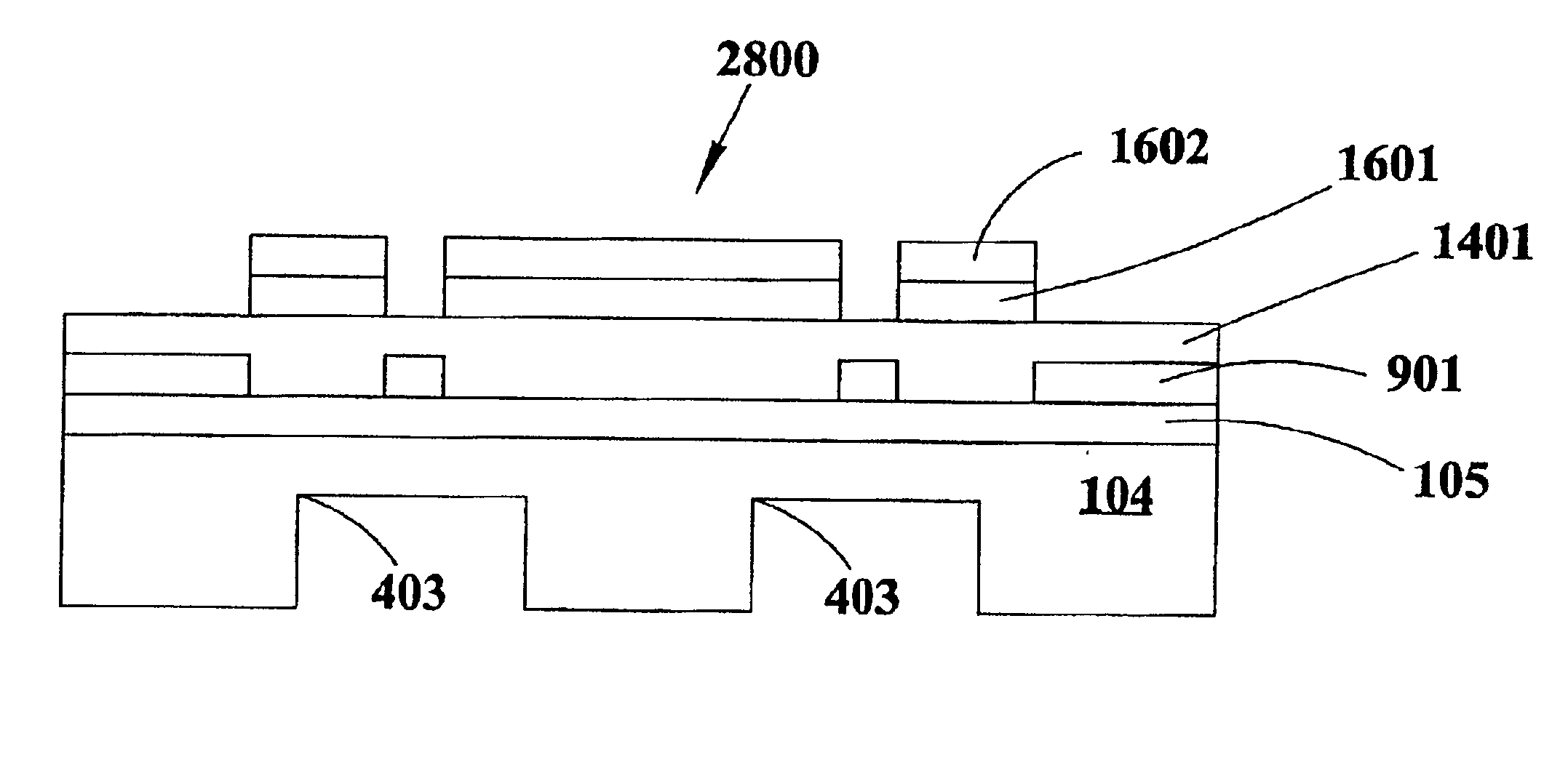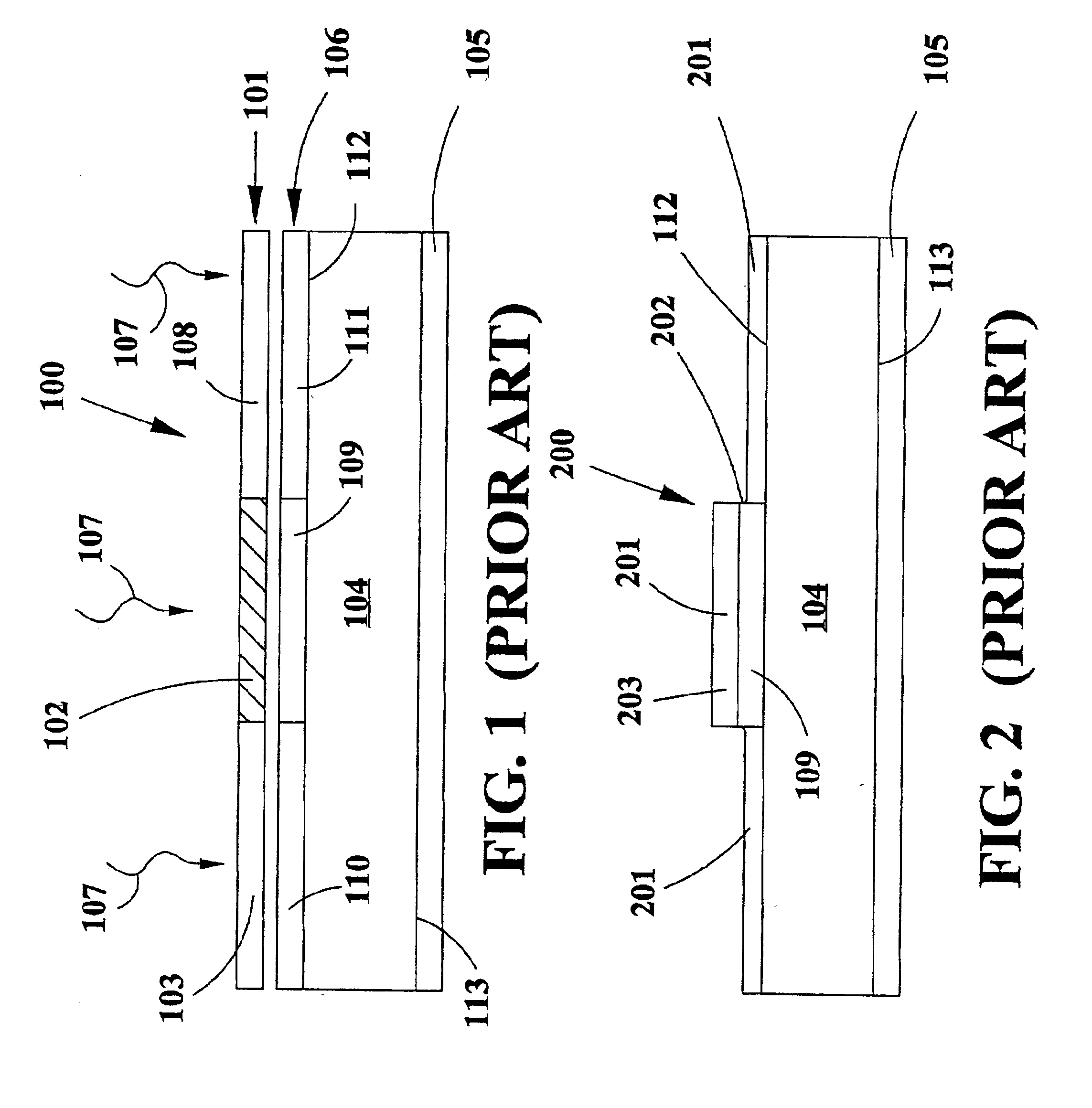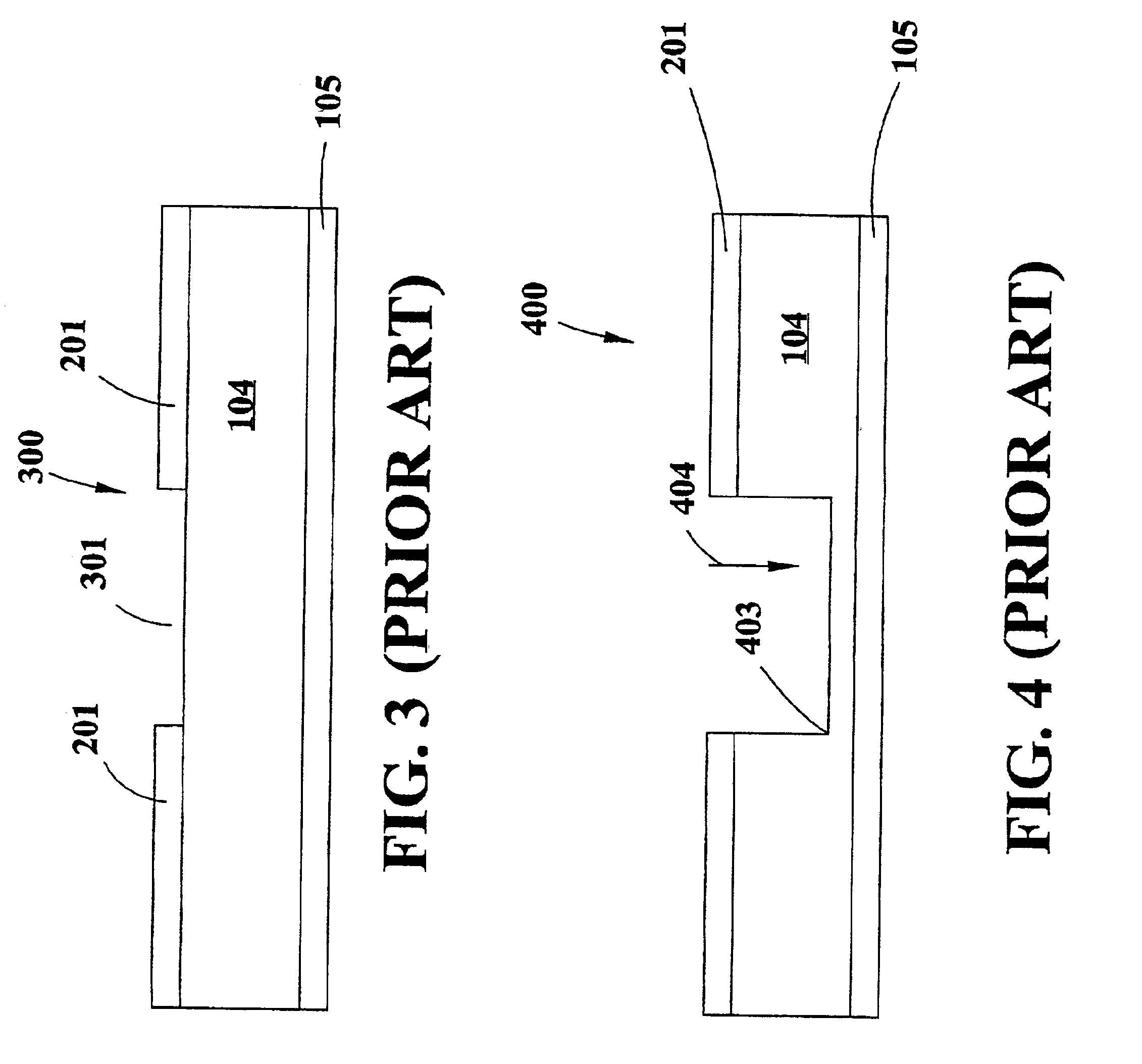Multi-functional micro electromechanical devices and method of bulk manufacturing same
a multi-functional, electromechanical technology, applied in the direction of fluid speed measurement, acceleration measurement using interia forces, instruments, etc., can solve the problems of early failure and time-consuming production process
- Summary
- Abstract
- Description
- Claims
- Application Information
AI Technical Summary
Benefits of technology
Problems solved by technology
Method used
Image
Examples
Embodiment Construction
FIG. 1 is a prior art schematic illustration of a portion 100 of a wafer 800 with ultraviolet light 107 applied to a mask 101 which is positioned in proximity to photoresist 106 applied to the back side 112 of a 3C-SiC, 4H-SiC or 6H-SiC wafer 800. The front side 113 of the portion 100 of a wafer 800 has an n-type epilayer 105 on the front side 113 thereof. Reference numeral 113 indicates the p-n junction between the n-type SiC epilayer and the p-type SiC substrate. FIG. 8 is an enlarged view of an entire SiC wafer 800 schematically illustrating a grid system of approximately 500 areas where approximately 500 sensors, for example, can be manufactured.
Mask 101 can contact photoresist 106 or it can be in proximity to the photoresist 106. Mask 101 includes transparent portions 103 and 108 as well as a circular opaque portion 102. The SiC substrate 104 and the n-type SiC epilayer 105 may be any of the 3C-SiC, 4H-SiC or 6H-SiC polytypes. Ultraviolet light imidizes portions 110 and 111 of ...
PUM
| Property | Measurement | Unit |
|---|---|---|
| Mass | aaaaa | aaaaa |
Abstract
Description
Claims
Application Information
 Login to View More
Login to View More - R&D
- Intellectual Property
- Life Sciences
- Materials
- Tech Scout
- Unparalleled Data Quality
- Higher Quality Content
- 60% Fewer Hallucinations
Browse by: Latest US Patents, China's latest patents, Technical Efficacy Thesaurus, Application Domain, Technology Topic, Popular Technical Reports.
© 2025 PatSnap. All rights reserved.Legal|Privacy policy|Modern Slavery Act Transparency Statement|Sitemap|About US| Contact US: help@patsnap.com



